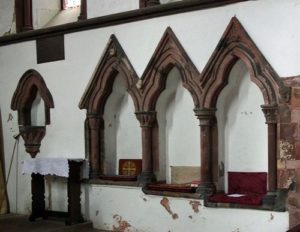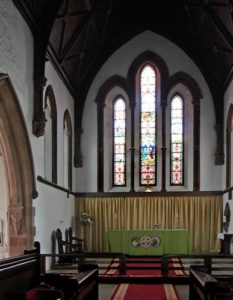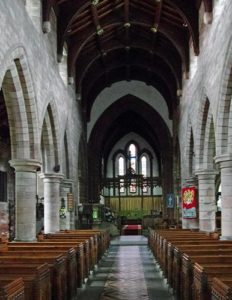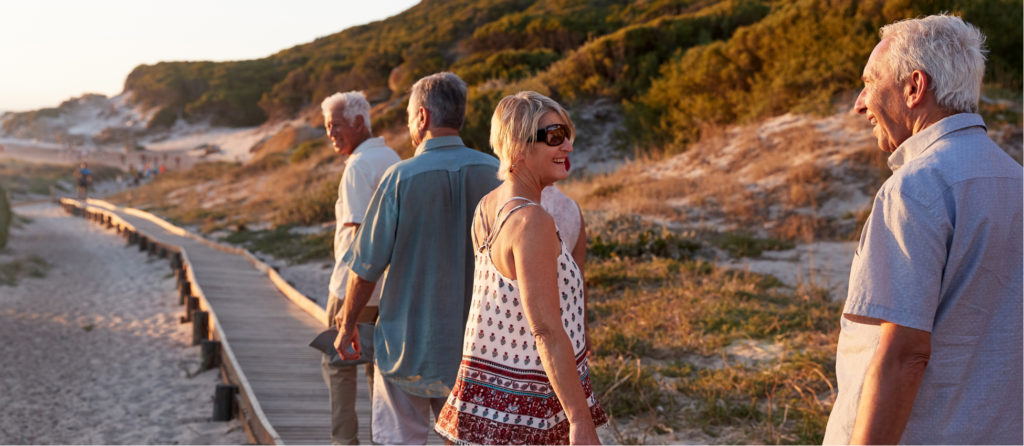Kirkby Stephen church stands at the end of the Market Place and is reached through the building known as the Old Cloisters. This was built to shelter church goers and was also used as the butter market. Steps lead through into the well kept churchyard. The church is unusual as it is used jointly by Anglicans and Catholics with both holding services here. It is also unusual as it is not dedicated to a saint.
Built from red sandstone, it has a tall battlemented and pinnacled tower at the west end. The long clerestories nave has lower side aisles and taller chancel
There has been a church on this site since Saxon times and this is the third church to be built on the site in about 1240. The south aisle was rebuilt in the C15th and the tower shortly afterwards. It was restored in the C19th when the clerestory was added and chancel rebuilt.
Entry is through the south porch and the first thing to catch the attention is the Loki stone immediately facing the door. This is a C10th Anglo-Danish cross shaft with a carving of the Norse God, Loki, as a bearded and chained figure. It is the only known example in Britain.
In a display case under the tower are carved stones found during the C19th restoration. There are cross shafts with scroll carvings and crosses.
Arcades of round pillars with pointed arches separate nave and side aisles. Round the pillars at the back of the nave are C18th wooden bread shelves used for distributing bread to the poor.
The chancel screen is 20thC and a memorial to those who died in the First World War. In front of it is a Victorian Shap granite and Italian marble pulpit.
The chancel still has theC13th sedilia and piscina on the north wall, old carved chairs and three long lancet windows at the east end.
To the left of the chancel, tucked in behind the organ is the Wharton chapel containing the tomb of Thomas, 1st Lord Wharton with his first wife Eleanor and second wife Anne.
To the right is the Hartley chapel. Above the entrance from the south aisle is an engraved glass panel showing the stoning of St Stephen, done by the person who did the glass engravings in Coventry Cathedral.
The chapel is maned after Sir Andrew de Harcla, 1st Earl of Carlisle, who was hanged, drawn and quartered as a traitor. His estates were forfeited and passed to the Musgraves. Set in a niche on the south wall is the tomb of Sir Richard Musgrave and has a small painted shield on the base. The Latin translation reads “Here lieth Richard Musgrave, knight near to him Elizabeth his wife and Thomas his son and heir who died 9th day of November 1464. May Gd have mercy on his soul or to those whose soul God be propitious”.
The second effigy in the chapel is another Sir Richard who died in 1499.
The information guide in the church makes mention of a Bushel wheat measure in the chapel. It is no longer there.
We found this a rather soulless church perhaps a result of the heavy Victorian restoration. The Loki stone was worth seeing as well as the other carved stones. The rest of the church is unexciting.
The church is open daily and there a large car park behind the Market Place.
There are more pictures “here.”:http://wasleys.org.uk/eleanor/churches/england/north/cumbria/kirby_stephen/index.html










